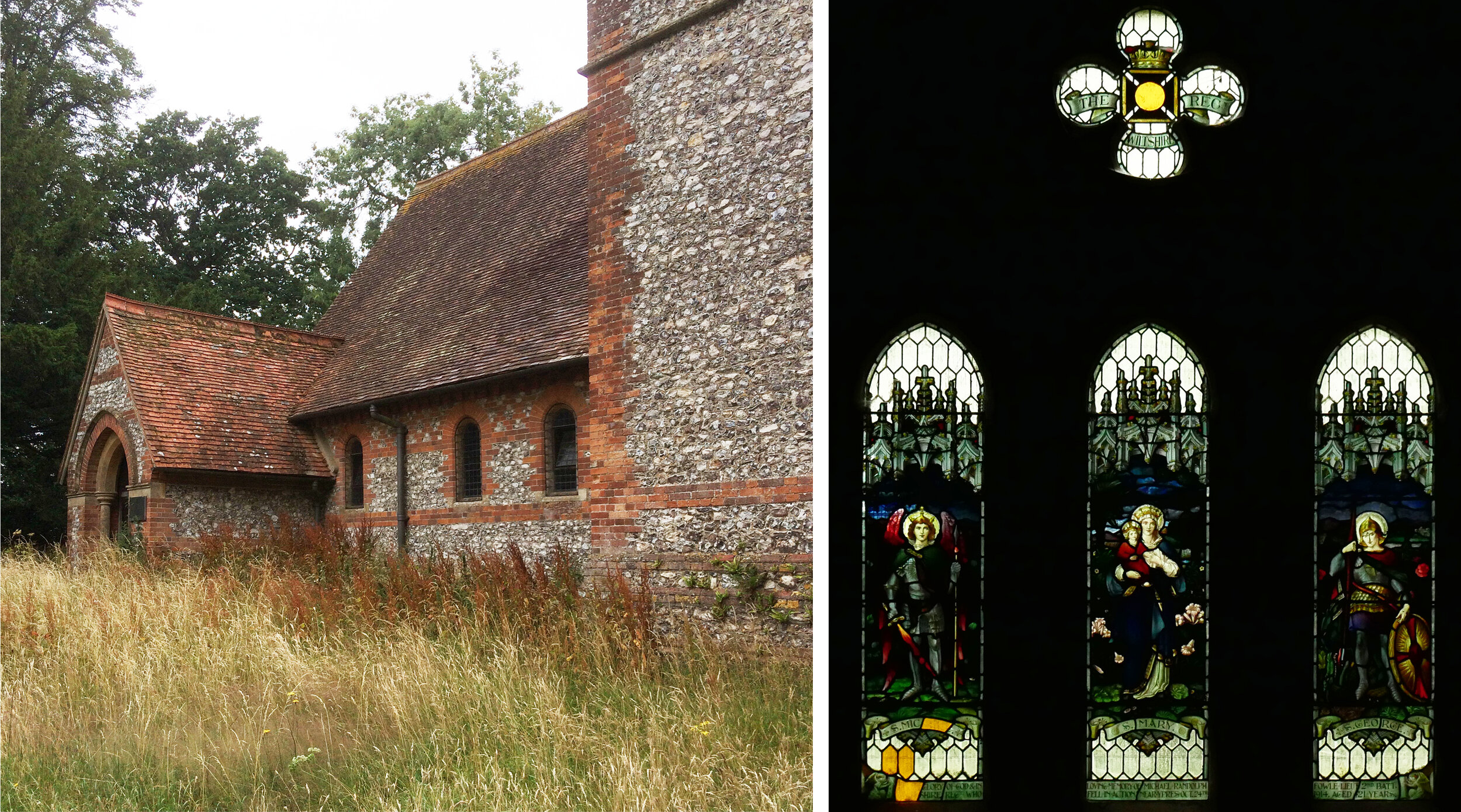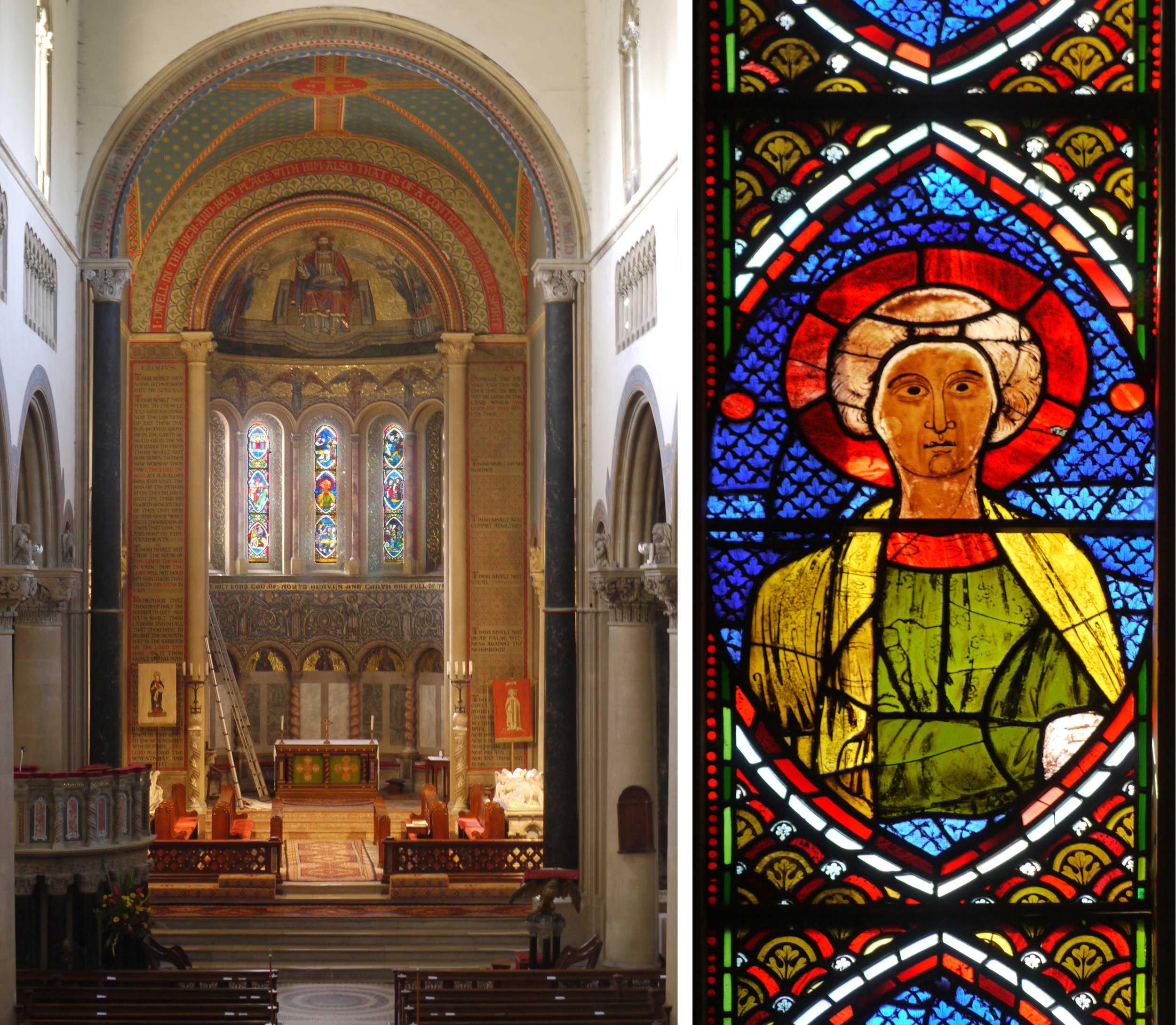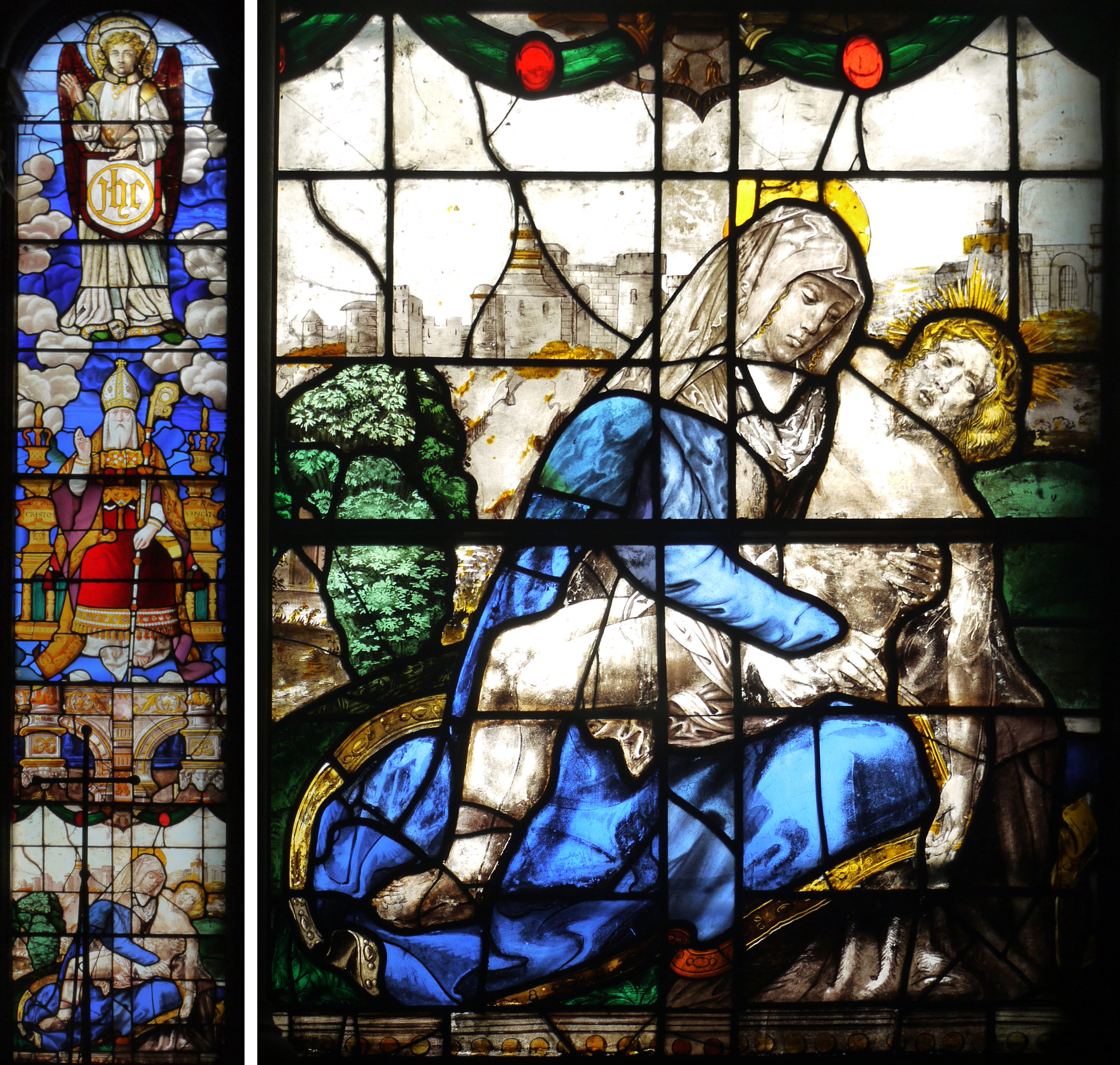The Vision of St Hubert 1966. St Mary, Chilton Foliat, Wiltshire, and detail.
Windows designed and made byJohn Hayward are easy to identify just from their style, with distinctive figures, crisp shading and criss crossing leads. Of the three in Wiltshire churches the one in Chilton Foliat from 1966 (above) is the earliest, although to me his work always looks as if it is rooted in the 1950s. It illustrates the story of St Hubert, with a fine stag in the centre where a crucifix hangs between his antlers and the shadowy figures of hunters pass by on a pale blue background.
Mary and Child 1985. St Mary, Collingbourne Kingston, Wiltshire, and detail.
Similarly, the John Hayward window at Collingbourne Kingston (above and below) looks great in its setting, letting in plenty of north light and full of wonderful painted sections and convincing figures. However, it is all a bit of a jumble and, unable to make sense of the imagery (did they once make gloves in Collingbourne Kingston?) I went back to read the blurb in the church leaflet. The window was commissioned in memory of Richard and Marguerita Wilson by their son. Not only do we have their initials and an inscription to them in the design, we also have St Mary holding the church on top of a map of the parish, the Annunciation, the sacraments of Eucharist. Baptism, Ordination and Confirmation all with their own symbols. There’s definitely too much going on here.
St Mary, Collingbourne Kingston. John Hayward window in north choir, detail from the window.
A few years later Hayward made an Annunciation window for Christ Church, Swindon (below), its form is very like the top section of the Collingbourne window. But this one, in a muted golden colour palette, fills the whole of the two lights, with architectural details and folded curtains making a dynamic setting for the beautifully painted figures.
The Annunciation 1987. Christ Church, Swindon, Wiltshire, and detail.
The Church and The Arts 1967. St Peter and Paul, Checkendon, Oxfordshire
Hayward’s window at Checkenden, Oxfordshire (above) is a window in the same vein. Here the background curtain behind the three figures that symbolise writing, painting and music lifts to reveal the virgin and child. The composition is calm and balanced, the colours subtle and harmonious.
It’s not the date they were made, the subject matter used, nor their position with attendant light conditions in the church that has caused the similarities between these two last examples that are simpler than any other Hayward windows I have seen, and all the better for it.
Interior of St Peter and Paul, Checkendon, and detail from John Hayward window.
























